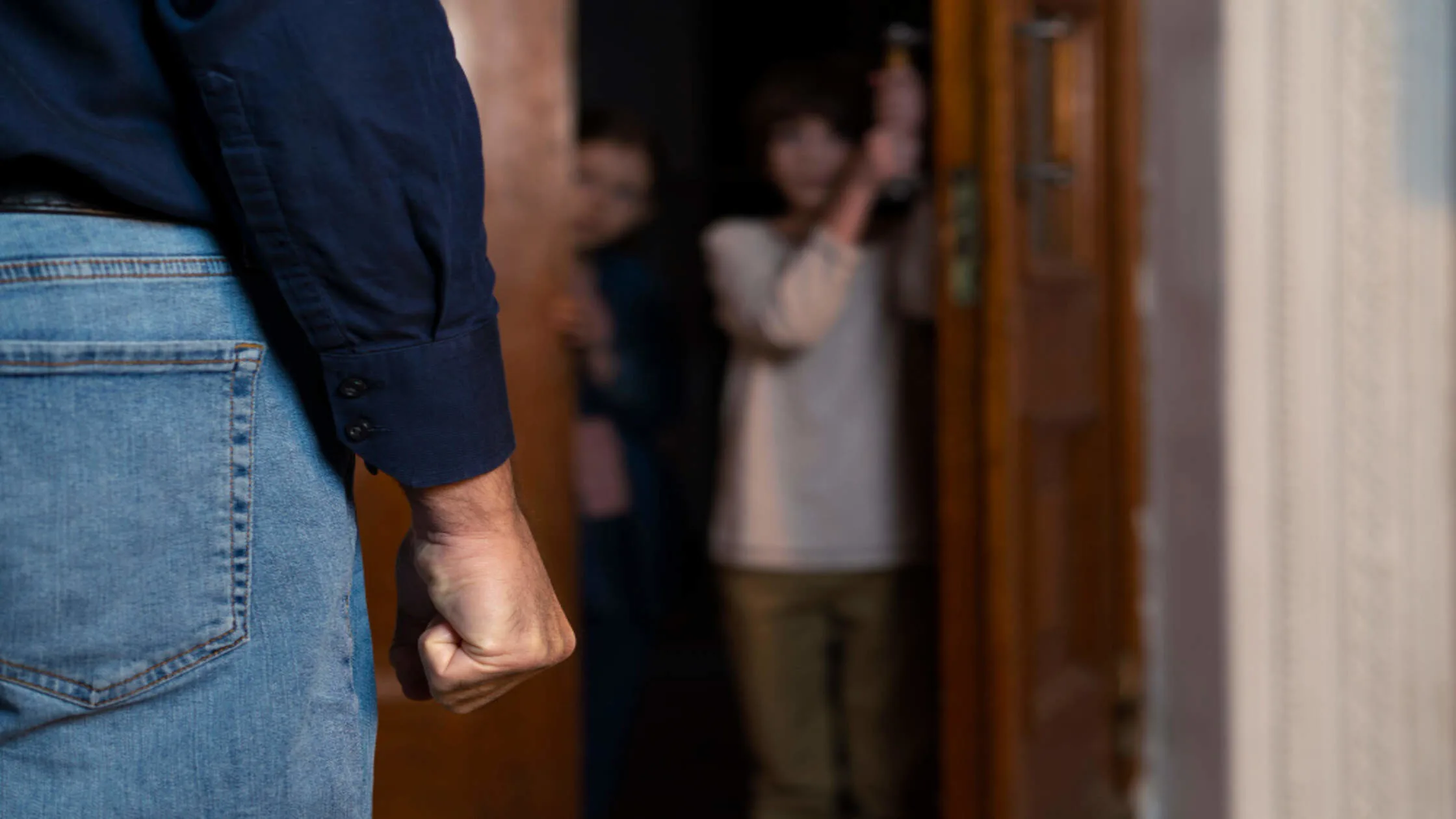
Utah's real estate landscape isn't just about buying and selling, sometimes, it's about who has the right to stay. Squatter rights and adverse possession laws can turn an abandoned property into a legal battleground. This guide will break down the 2025 legal Utah squatter rights, explaining how adverse possession works, what rights squatters have, and the steps property owners can take to prevent unauthorized occupation.
Does Utah Have Squatters Rights?

Squatter rights refer to the legal principles that, under specific conditions, allow a person occupying a property they do not own to claim legal ownership over time.
In Utah, this is primarily governed by adverse possession laws, which outline the requirements a squatter must meet before they can gain legal Utah squatter rights to the land. While this process takes years and requires strict conditions, it is a real legal pathway that has led to property disputes between landowners and long-term occupants.
Property owners often worry about squatters because removing them is not always as simple as calling the police. In some cases, squatters gain legal standing, requiring a formal eviction process to remove them. The eviction process can be lengthy and costly, similar to how a tenant may have legal rights related to a security deposit in rental agreements.
What is Considered Squatting?
Squatting occurs when a person occupies a property without the legal right to do so, often without the owner’s permission. Unlike a standard rental agreement or lease, squatters do not have a contractual relationship with the property owner. Instead, they take possession of an unoccupied or neglected property, sometimes under the belief that they have a right to stay.
In some cases, squatting may be unintentional, such as when a person moves into an abandoned property, assuming it has no legal owner. In other instances, it is done knowingly, with the intent of staying long enough to claim ownership through adverse possession laws.
Regardless of intent, squatting is a complex legal issue that must be handled according to Utah law.
Legal Basis for Utah Squatter Rights: Utah Code Sections 78B-2-208 to -219
Utah squatter rights are based on adverse possession laws, outlined in Utah Code Sections 78B-2-208 to -219. These laws state that if a person occupies a property continuously and meets specific legal conditions, they may be able to claim ownership. However, Utah sets strict requirements for adverse possession:
- The squatter must live on the property uninterrupted for at least 7 years.
- The occupation must be visible and obvious, meaning the true owner would reasonably be aware of it.
- The squatter must be the only person living on the property, not sharing it with others or the owner.
- Utah law requires the squatter to pay property taxes on the land for the entire 7-year period to qualify for adverse possession.
Failure to meet any of these conditions means the squatter cannot claim ownership through Utah squatter rights.
Distinguishing Squatting from Trespassing in Utah
While squatting and trespassing both involve occupying a property without the owner’s consent, they are legally distinct concepts with different consequences.
Definition of Trespassing
Trespassing occurs when a person enters or remains on a property without authorization, and it is considered a criminal act under Utah law. Property owners can take immediate legal action against trespassers by reporting them to law enforcement.
Key elements of trespassing include:
- Entering private property without permission
- Remaining on the property after being asked to leave
- Bypassing no trespassing signs, fences, or gates
- Intentionally entering a restricted or clearly marked private area
Unlike squatters, trespassers do not attempt to claim ownership or meet adverse possession requirements. Instead, they are unlawfully present on someone else's property, often for a short period.
Key Differences Between Squatting and Trespassing
By knowing Utah squatting laws, Utah residential trespassing laws, and adverse possession, both property owners and occupants can better navigate their rights and responsibilities.
Understanding Adverse Possession in Utah
In Utah, adverse possession is a complex legal process with strict requirements.
What Are Adverse Possession Laws?
Adverse possession laws, including those in Utah, address situations where land is left vacant, abandoned, or neglected for an extended period. If someone continuously occupies a property under specific conditions, they may eventually gain legal ownership. This situation is often compared to squatters' rights vs adverse possession, as both involve individuals occupying land without legal permission.
Utah’s adverse possession laws are covered under Utah Code Sections 78B-2-208 to -219. These laws state that an individual who meets all legal conditions can file a claim to obtain the title to the land. However, these claims are rare and difficult to prove since they require clear and documented proof of continuous occupation.
Requirements for a Valid Adverse Possession Claim
As stated above, to successfully claim adverse possession in Utah, a squatter must meet five strict legal conditions under Utah squatter rights for at least seven years:
- The person must live on or use the property without interruption
- Temporary absences or shared possession with the owner can invalidate the claim.
- The occupation must be obvious to anyone, including the property owner.
- If the property owner allows the person to stay (e.g., through a lease or agreement), the claim becomes invalid.
- Without tax payments, a squatter’s claim is unlikely to succeed in court.
Legal Process to Claim Adverse Possession
Even if a squatter meets all five legal conditions, they must still go through a formal legal process to obtain ownership. Here’s how it typically works:
- File a Quiet Title Action: This legal action asks the court to recognize them as the rightful owner.
- Provide Evidence of Continuous Occupation: The squatter must show proof of residence (utility bills, tax records, maintenance receipts, etc.). Sometimes, witness testimony or other supporting evidence may be required.
- Court Review and Decision: A judge will evaluate whether the claim meets all legal requirements.
- Finalizing Ownership Rights: If the court rules in the squatter’s favor, they can legally register the property under their name.
Since this process involves a formal lawsuit, it can take months or even years, and the burden of proof is on the squatter.
How To Carry Out the Eviction Process in Utah?

In some cases, squatters may gain legal protections, requiring a formal eviction process. Utah law provides clear steps for removing squatters, but the process can be time-consuming if the occupants refuse to leave.
Legal Grounds for Eviction
Before filing for eviction, the property owner must establish a legal reason to remove the squatter.
- Unauthorized Occupation – The squatter has no lease or legal right to be on the property.
- Failure to Pay Rent (if an informal agreement existed) – If the squatter was paying rent but stopped, they may still require a formal eviction.
- Damage to Property – If the squatter is causing damage or creating unsafe conditions, eviction may be expedited.
If a tenant breaks their lease early without following proper procedures, the landlord may have grounds for eviction. Understanding Utah’s early lease termination laws can help property owners navigate this process legally and efficiently.
5 Steps in the Eviction Process
The eviction process in Utah follows a structured legal procedure to ensure squatters are removed lawfully.
- Serve an Eviction Notice – The first step in removing a squatter is to serve a three-day notice to vacate. This legally informs them that they must leave the property within the given timeframe.
- File an Unlawful Detainer Lawsuit – If the squatter does not comply, the property owner must file an unlawful detainer lawsuit in court. This officially requests the court to remove the squatter and return possession to the rightful owner. Once the case is filed, a hearing date will be set.
- Attend the Court Hearing – Both the property owner and the squatter must appear in court. The judge will review the evidence and decide whether the eviction is justified. If the court rules in favor of the owner, it will issue a formal eviction order.
- Law Enforcement Enforces Eviction – If the squatter still refuses to leave, the local sheriff or police will enforce the eviction order. Property owners cannot remove squatters themselves—law enforcement must handle the physical removal.
- Handling Abandoned Property – In case the squatter leaves belongings behind, the property owner must follow Utah’s legal procedures for abandoned property, which may require storing items for a specific period before disposal.
Estimated Timeline for Eviction
How long does the eviction process take in Utah?
The amount of time needed to evict a squatter in Utah depends on whether they comply with the eviction notice or fight the case in court.
Practical Tips to Protect Your Property from Squatters
Preventing squatters from occupying your property is far easier than removing them once they have settled in. Property owners, whether they live on-site or manage vacant properties, should take proactive steps to protect their land from unauthorized occupation.
Preventative Measures for Property Owners
Taking preventative measures is the best way to safeguard your property from squatters.
- One of the most effective ways to prevent squatters is to frequently check on your property. Long periods of vacancy increase the risk of unauthorized occupation. If you own multiple properties or are away for extended periods, consider hiring a property management company or a trusted neighbor to monitor the property.
- Ensure all doors, windows, and gates are locked and in good condition.
- Clearly marking your property with “No Trespassing” and “Private Property” signs serves as a legal warning. In Utah, having these signs in place can help law enforcement take quicker action against unauthorized occupants.
- Motion-activated security cameras, alarms, and outdoor lighting can deter squatters from attempting to enter your property.
- Keep your property looking occupied by mowing the lawn, trimming bushes, and removing trash or debris.
- Keep track of water, electricity, and gas usage. A sudden spike in utility usage could indicate unauthorized occupants, while extremely low usage might mean the property appears abandoned, making it a target for squatters.
Legal Actions Against Squatters
Even with strong preventative measures, squatters may still manage to occupy a property. If this happens, property owners must act quickly to remove them legally.
If you discover squatters on your property, your first step should be to call the police or sheriff’s department. If the squatters are trespassing and have not established any legal claim, officers may remove them immediately. However, if they present a rental agreement (even a fraudulent one) or have lived on the property for an extended period, a formal eviction process may be required.
Serve squatters with a three-day notice to vacate, as required by Utah law. This notice informs them that they must leave the property voluntarily within three days or face legal action.
Follow legal guidelines for handling Utah abandoned property law. This may involve storing the items for a specific period before disposal.
Summary
No one wants to deal with the stress of squatters, but a well-prepared property owner can prevent the problem before it starts. For landlords, LeaseRunner offers trusted tenant screening tools to help find responsible renters, reducing the risk of vacant properties being targeted. The best defense against Utah squatter rights is being proactive - take action now to safeguard your property!
FAQs
Q1: What are squatters’ rights in Utah?
Utah squatter rights refer to the legal principle of adverse possession, where a person who occupies someone else's property without permission may eventually gain legal ownership after meeting specific requirements. For squatters to claim ownership, they must openly occupy the property for a certain period (usually seven years in Utah) and meet other criteria.
Q2: Is Squatting Legal in Utah?
No, squatting is not legal in Utah. Squatting, or occupying a property without the owner's consent, is considered unlawful. However, squatters may sometimes gain legal Utah squatter rights over time under adverse possession laws.
Q3: Who Came Up with Squatter Rights?
The concept originated in England during medieval times, where landowners who didn’t actively use their land or manage it effectively risked losing it to someone who did. Over time, this evolved into modern laws governing adverse possession in countries like the United States, including Utah.
Q4: How Long Do Squatter Rights Last in Utah?
In Utah, squatters can claim adverse possession after occupying a property for at least seven years, provided they meet the following conditions: continuous, exclusive, and open use of the property. During this time, they cannot be challenged or interrupted by the rightful owner.



